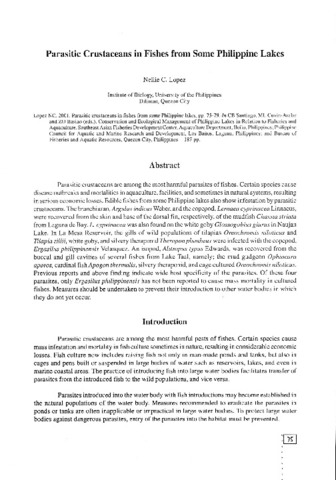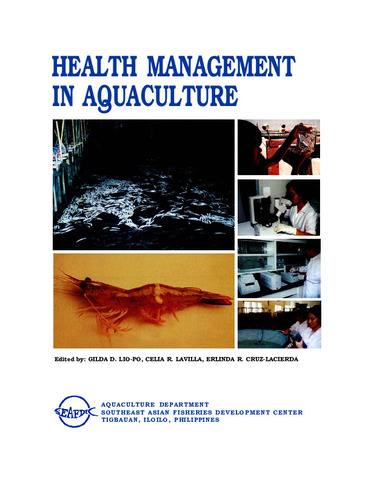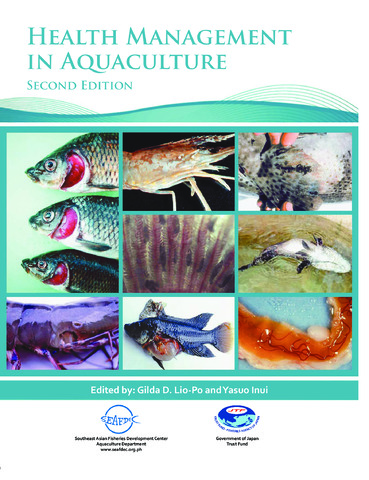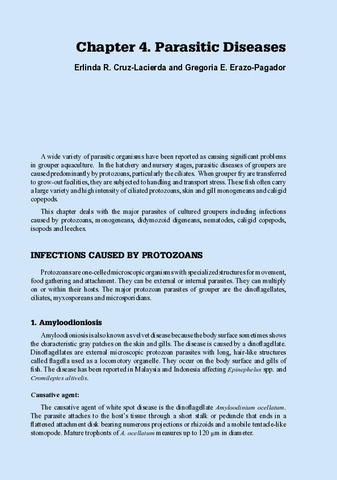| dc.contributor.author | Lopez, Nellie C. | |
| dc.date.accessioned | 2012-01-19T11:05:02Z | |
| dc.date.available | 2012-01-19T11:05:02Z | |
| dc.date.issued | 2001 | |
| dc.identifier.citation | Lopez, N. C. (2001). Parasitic crustaceans in fishes from some Philippine lakes. In C. B. Santiago, M. L. Cuvin-Aralar, & Z. U. Basiao (Eds.), Conservation and Ecological Management of Philippine Lakes in Relation to Fisheries and Aquaculture (pp. 75-79). Tigbauan, Iloilo, Philippines: Aquaculture Department, Southeast Asian Fisheries Development Center; Los Baños, Laguna, Philippines: Philippine Council for Aquatic and Marine Research and Development (PCAMRD), Department of Science and Technology; Quezon City, Philippines: Bureau of Fisheries and Aquatic Resources (BFAR), Department of Agriculture, Quezon City, Philippines. | en |
| dc.identifier.isbn | 9718511539 | |
| dc.identifier.uri | http://hdl.handle.net/10862/824 | |
| dc.description.abstract | Parasitic crustaceans are among the most harmful parasites of fishes. Certain species cause disease outbreaks and mortalities in aquaculture, facilities, and sometimes in natural systems, resulting in serious economic losses. Edible fishes from some Philippine lakes also show infestation by parasitic crustaceans. The branchiuran, Argulus indicus Weber, and the copepod, Lernaea cyprinacea Linnaeus, were recovered from the skin and base of the dorsal fin, respectively, of the mudfish Channa striata from Laguna de Bay. L. cyprinacea was also found on the white goby Glossogobius giurus in Naujan Lake. In La Mesa Reservoir, the gills of wild populations of tilapias Oreochromis niloticus and Tilapia zillii, white goby, and silvery theraponid Therapon plumbeus were infected with the copepod, Ergasilus philippinensis Velasquez. An isopod, Alitropus typus Edwards, was recovered from the buccal and gill cavities of several fishes from Lake Taal, namely; the mud gudgeon Ophiocara aporos, cardinal fish Apogon thermalis, silvery theraponid, and cage cultured Oreochromis niloticus. Previous reports and above finding indicate wide host specificity of the parasites. Of these four parasites, only Ergasilus philippinensis has not been reported to cause mass mortality in cultured fishes. Measures should be undertaken to prevent their introduction to other water bodies in which they do not yet occur. | en |
| dc.language.iso | en | en |
| dc.publisher | Aquaculture Department, Southeast Asian Fisheries Development Center | en |
| dc.publisher | Philippine Council for Aquatic and Marine Research and Development (PCAMRD), Department of Science and Technology | en |
| dc.publisher | Bureau of Fisheries and Aquatic Resources | en |
| dc.subject | Argulus | en |
| dc.subject | Channa striatus | en |
| dc.subject | Oreochromis niloticus | en |
| dc.subject | Tilapia zillii | en |
| dc.subject | Philippines | en |
| dc.title | Parasitic crustaceans in fishes from some Philippine Lakes | en |
| dc.type | Conference paper | en |
| dc.citation.spage | 75 | |
| dc.citation.epage | 79 | |
| dc.citation.conferenceTitle | Conservation and Ecological Management of Philippine Lakes in Relation to Fisheries and Aquaculture: Proceedings of the National Seminar-Workshop held on October 21-23, 1997, INNOTECH, Commonwealth Ave., Diliman, Quezon City, Philippines | en |
| dc.subject.asfa | cage culture | en |
| dc.subject.asfa | disease transmission | en |
| dc.subject.asfa | fish diseases | en |
| dc.subject.asfa | freshwater aquaculture | en |
| dc.subject.asfa | freshwater crustaceans | en |
| dc.subject.asfa | husbandry diseases | en |
| dc.subject.asfa | parasites | en |
| dc.subject.asfa | parasitic diseases | en |
| dc.subject.scientificName | Alitropus typus | en |
| dc.subject.scientificName | Apogon thermalis | en |
| dc.subject.scientificName | Ergasilus philippinensis | en |
| dc.subject.scientificName | Argulus indicus | en |
| dc.subject.scientificName | Glossogobius giurus | en |
| dc.subject.scientificName | Lernaea | en |
| dc.subject.scientificName | Lernaea cyprinacea | en |
| dc.subject.scientificName | Lernaea lophiara | en |
| dc.subject.scientificName | Ophiocara aporos | en |
| dc.subject.scientificName | Therapon plumbeus | en |





